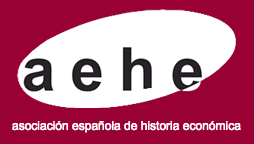Not all wheats are the same: selection and improvement of wheat in Portugal since early modern times (16th to 20th centuries)
DOI:
https://doi.org/10.33231/j.ihe.2025.01.03Palabras clave:
Biotechnology, Wheat, Wheat varieties, PortugalResumen
This article examines the dissemination processes and geography of wheat species and varieties in Portugal between the 16th and the 20th centuries. Based on a wide range of sources, from monastic records to official agricultural reports and oral interviews, it is concluded that the conditions that shaped the traditional division between soft varieties in the north and hard varieties in the south had changed by the late 19th century. At that point, soft landraces thrived in the south, but were soon replaced by improved/hybridized varieties, many of which were imported. Thus, wheat landraces persisted only in the mountainous peripheral areas, due to the agroecological and socioeconomic context. It is also emphasized that Portugal did not lag the most central countries in terms of agricultural biotechnology development.
Descargas
Descargas
Publicado
Cómo citar
Número
Sección
Licencia
Derechos de autor 2025 Carlos Manuel Faísca, Dulce Freire

Esta obra está bajo una licencia internacional Creative Commons Atribución-NoComercial-SinDerivadas 4.0.
Aquellos autores/as que tengan publicaciones con esta revista, aceptan los términos siguientes
- Los autores/as conservarán sus derechos de autor y garantizarán a la revista el derecho de primera publicación de su obra, el cuál estará simultáneamente sujeto a la Licencia de reconocimiento de Creative Commons Reconocimiento-No comercial-Sin obra derivada 4.0 Internacional que permite a terceros compartir la obra siempre que se indique su autor y su primera publicación esta revista, y no permite hacer uso comercial de la misma ni tampoco obras derivadas.
- Los autores/as podrán adoptar otros acuerdos de licencia no exclusiva de distribución de la versión de la obra publicada (p. ej.: depositarla en un archivo telemático institucional o publicarla en un volumen monográfico) siempre que se indique la publicación inicial en esta revista.
Plagio y fraude científico
La publicación de un trabajo que atente contra los derechos de propiedad intelectual será responsabilidad de los autores/as, que serán los que asuman los conflictos que pudieran tener lugar por razones de derechos de autor. Los conflictos más importantes pueden darse por la comisión de plagios y fraudes científicos.
Se entiende por plagio:
- Presentar el trabajo ajeno como propio.
- Adoptar palabras o ideas de otros autores sin el debido reconocimiento.
- No emplear las comillas u otro formato distintivo en una cita literal.
- Dar información incorrecta sobre la verdadera fuente de una cita.
- El parafraseo de una fuente sin mencionar la fuente.
- El parafraseo abusivo, incluso si se menciona la fuente.
Las prácticas constitutivas de fraude científico son las siguientes:
- Fabricación, falsificación u omisión de datos y plagio.
- Publicación duplicada.
- Conflictos de autoría.






